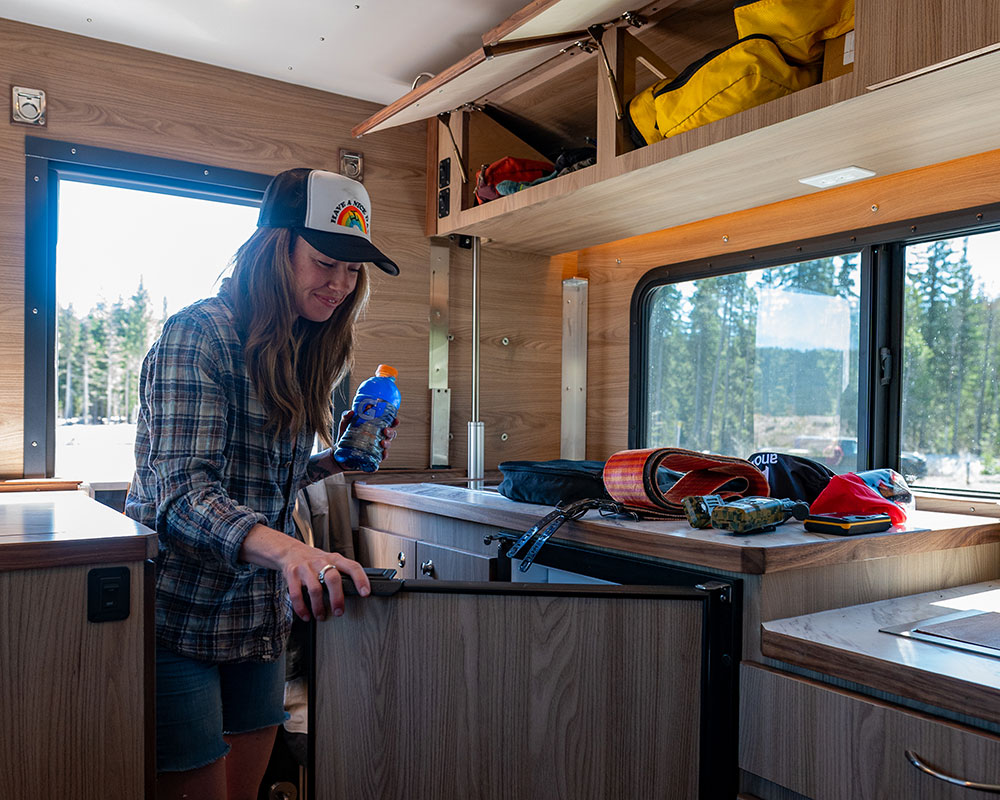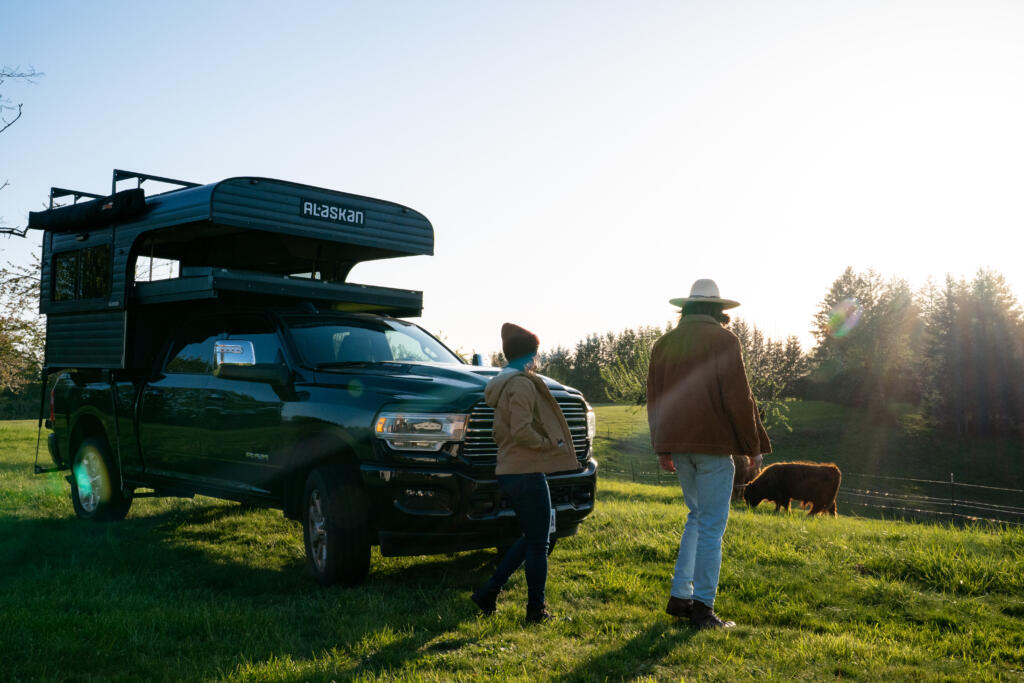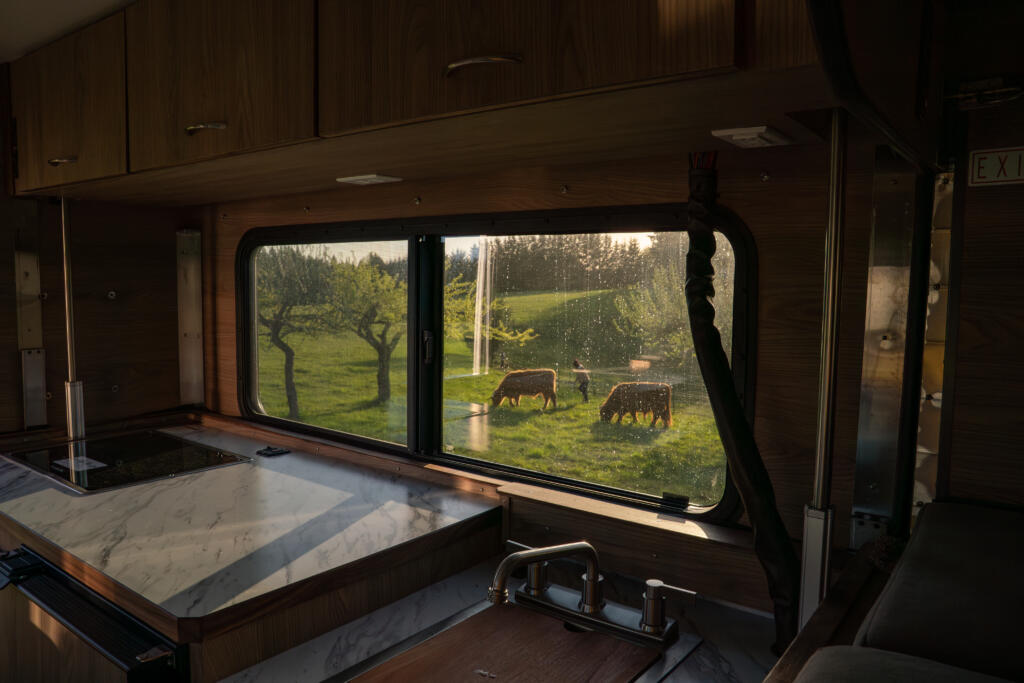The Complete Half-Ton Truck Camper Guide
Everything you need to know about matching a camper to a half-ton truck—weights, limits, smart setups, and the trade-offs that make it all work.
On paper, sticking a camper on a half-ton truck seems like a no-brainer. Simple, right? But once you sit down and start crunching the numbers—it gets complicated. We’ve seen this movie play out more than a few times: someone dreams up the perfect little adventure rig, loads it all up, and suddenly their truck drives like a wobbly shopping cart missing a wheel.
But done right? A half-ton build can be awesome—agile, efficient, and surprisingly capable out on the road. The key is knowing what these trucks can actually handle—and then building your rig around real-world numbers, not around campfire talk and glossy brochures.

Payload: The One Number That Really Matters
When it comes to truck campers, payload isn’t just another stat—it’s the whole game. Payload is the max weight your truck can safely carry in the cab and bed combined. It’s based on the difference between the truck’s GVWR (gross vehicle weight rating) and its curb weight. And yep, everything counts toward it: people, water, fuel, gear, tools, and of course, the camper itself.
Most modern half-ton pickups are rated somewhere between 1,700 and 2,500 pounds of payload. Sounds decent at first—until you realize a fully-loaded hard-sided camper can weigh that much before you throw in passengers, water (8.3 pounds per gallon), or even a weekend’s worth of snacks.
As Truck Camper Adventure bluntly puts it: “If you want a hard-side truck camper, you’ll need a truck with a payload around 3,000 pounds or higher.” Translation: half-tons work best with lighter pop-up campers or super-streamlined setups.
Overload your truck, and it’s not just bad for the ride—it’s dangerous. You’ll lose braking power, chew through suspension parts, and your truck’s rear end might sag like it’s carrying bricks in the trunk. Not a great look on the freeway. For more details, check out our post about how to read a payload sticker.

What Works (and What Really Doesn’t) on Half-Tons
Here’s the thing: “half-ton” is more of a marketing label than a hard spec. A brand-new F-150 or Ram 1500 might be rated for 2,200 lbs of payload—but only if you pick the right trim. Start adding 4WD, a crew cab, luxury interior, or a bigger engine, and your payload shrinks fast. Like… a few hundred pounds gone in a blink.
That’s why seasoned truck camper folks tend to favor lightweight pop-ups when pairing with half-ton trucks. Minimal builds work better. As one user on a Truck Camper Adventure thread put it, “A ½-ton will carry a pop-up well, but a full hard-side? Forget it.”
Bottom line: a half-ton can haul a camper. But not every camper. Choosing the right one—and knowing your limits—makes all the difference between a good trip and a white-knuckle nightmare.

Where Alaskan Campers Fit In
We’ve seen quite a few half-ton + Alaskan pairings over the years, and to be totally honest—it’s possible. But it’s not for everyone.
Our hard-sided pop-up campers range from about 1,700 to 2,400 pounds when dry. Some larger models even creep close to 3,000. Add water, propane, batteries, food, gear… you’re quickly flirting with the upper limit of what most half-tons can reasonably carry.
That’s why we usually recommend going with at least a ¾-ton truck if you’re pairing with one of our campers. It’s not just about selling a bigger truck—it’s about giving you a rig that handles well and drives with confidence.
But if you’re determined to make it work with a half-ton, it can be done. You’ll just have to be smart about it. Go light on water. Skip the generator. Prioritize what you really need and leave the rest behind. You’ll keep the nimble, daily-driver feel that half-tons are known for, but you’ll trade away some of that long-term, off-grid comfort that bigger trucks support better.

Our Go-To Checklist for Half-Ton Builds
If you’re building out a half-ton rig, don’t skip the checklist. A little prep goes a long way—and can keep your trip smooth instead of sketchy.
- Know your truck’s numbers. Check the yellow door-jamb sticker. Or plug the VIN into your manufacturer’s lookup site.
- Weigh your truck as-is. Full fuel, people inside, tools, gear—everything. Do it before mounting the camper.
- Calculate total camper weight. Start with the dry weight. Then add water, propane, food, gear, and passengers. Keep the final number under your payload limit by 10–15%.
- Check center of gravity. It should fall forward of the rear axle for best stability.
- Consider smart upgrades. Good tires, airbags, sway bars—these can improve handling, but they don’t increase payload capacity.
- Weigh again after mounting. Head to a certified scale and verify front and rear axle weights.
- Pack light. Be intentional. Comfort is great, but necessity should win every time.
When your truck’s properly balanced and your weight is dialed in, you’ll feel it on the first stretch of highway—or when the wind kicks up and your steering doesn’t feel like a fight.

½-Ton vs. ¾-Ton vs. 1-Ton: What’s the Real Deal?
Back in the day, “ton” ratings were literal: a half-ton carried 1,000 pounds, a ¾-ton carried 1,500, and so on. That’s no longer true—but the basic tiers still help define capability.
| Truck Class | Typical Payload | Ideal Camper Type | Pros | Cons |
| ½-Ton (1500) | 1,700–2,500 lbs | Pop-ups, minimalist hard-sides | Great MPG, more nimble, cheaper | Limited capacity, less off-grid range |
| ¾-Ton (2500) | 3,000–4,500 lbs | Most hard-sided campers | Better ride with a load, more stable | More expensive, less maneuverable |
| 1-Ton (3500) | 5,000–7,500 lbs | Big campers, full setups | Max capability, off-grid ready | Bulky, lower fuel economy |
For weekend trips or lightweight builds, a half-ton might be just the ticket. But if you’re dreaming of solar power, big tanks, or long-haul travel? A ¾-ton or 1-ton opens way more doors without compromising safety or ride quality.

Keep It Real, Keep It Balanced
At Alaskan, we’ve always said that capability isn’t just about numbers—it’s about purpose. Whether you’re rolling in a lean half-ton build or a fully loaded one-ton beast, your rig should feel balanced, safe, and ready for whatever’s around the next bend.
Half-tons are great when you want to keep things simple. They’re light on their feet, easy to live with, and remind us that not every trip needs to be maxed out. But that simplicity only works if you respect the limits.
Know your numbers. Weigh your stuff. Pack for the trip—not for every “what if.” And above all, build your rig with care, just like we build ours: with purpose, precision, and a little love for the open road.
Related Reading
How to Read a Payload Sticker
The Right Truck Size for an Alaskan Camper
Do Truck Campers Hold Their Value?
Truck Camper MPG: What You’ll Actually See at the Pump
Standard vs. Optional Features in Alaskan Campers
